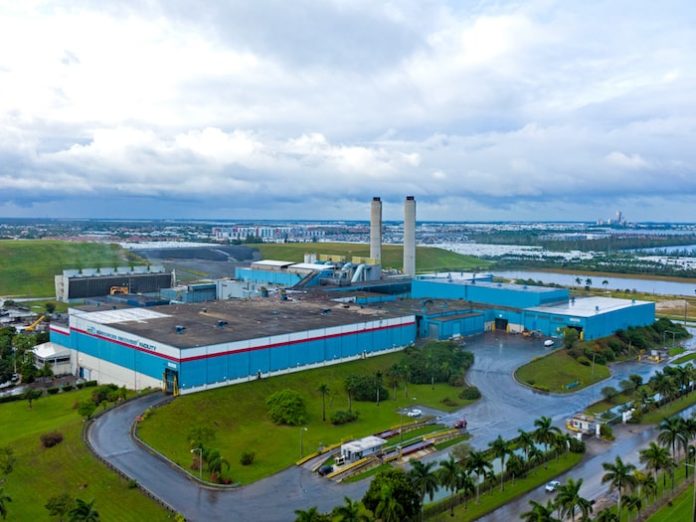|
Getting your Trinity Audio player ready...
|
It’s just waste, so you throw it away and it goes to a landfill—out of sight, out of mind, right?
Well, believe it or not, waste is a valuable resource. One that, in Miami-Dade County, produces enough electricity to power about 35,000 homes.
The Miami-Dade County Department of Solid Waste Management (DSWM) owns the Resources Recovery Facility (RRF) in Doral. Opened in 1982, this 160-acre facility is where most of the waste managed by DSWM ends up—not a landfill (although some does go to landfill).
“Almost everything that burns goes to the Resources Recovery Facility,” said Michael Fernandez, DSWM Director. “After we incinerate the waste, we reduce the volume that goes to landfill by 90 percent, and as a by-product, we create electricity.”
The RRF processes approximately 1.1 million tons of waste each year; 900,000 tons of garbage (from inside your home) and 200,000 tons of trash (stuff like yard waste).
The facility shreds the waste and removes ferrous (about 20,000 tons yearly) and non-ferrous (6,000 tons yearly) metals, which are recycled.
After shredding, waste is conveyed to the powerhouse.
The magic begins at the powerhouse. Waste is incinerated to create steam via four boilers that operate 24/7. The steam spins turbines that create 440,000 megawatt hours of electricity each year. This is enough electricity to power the RRF, plus 35,000 single-family homes. Some of this electrical energy is sold to the City of Homestead’s electrical utility.
So, what’s left? Ash. The incineration process reduces the volume of waste by 90 percent or as DSWM likes to say, for every ten trucks with waste that come in to the RRF, one truck of ash is disposed of. Disposal takes place on site at a special landfill that only accepts the ash from incineration of the waste.
What about smoke? You’ll be hard pressed to see any coming from the facility’s dual 250-ft. stacks. That’s because RRF boasts a $40 million state-of-the-art air pollution control system. The system includes scrubbers, activated carbon, and baghouses with glass micro filters to remove dust.
What about odors? “We want to be good neighbors, so we’ve invested in a number of odor-control measures at RRF,” said Mr. Fernandez.
It starts in the receiving area, with automatic fast doors that open as a truck enters and closes immediately afterwards. Odors within the receiving and processing areas are controlled by negative air pressure. This air is “recycled” and used in the combustion process, where the odor components are destroyed.
Lastly, a series of odor neutralizing and counteracting misting stations are strategically located throughout the facility.
“We believe that incinerating waste to reduce volume and create energy is not only environmentally friendly but it’s the future of solid waste disposal in Miami-Dade County—and it’s happening now,” said Mr. Fernandez.
To learn more about DSWM and the services they provide, visit www.miamidade.gov/solidwaste, call 311 or follow them on social media: @MiamiDadeSolidWaste on Facebook and @miamidadeswm for Twitter; @305Mosquito on Facebook, Twitter and Instagram.
Frank Calderon is Communications Manager for the Miami-Dade County Department of Solid Waste Management. He has been with the department since 2009.






